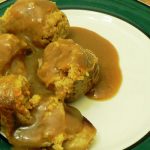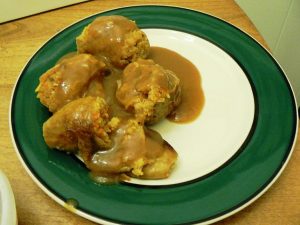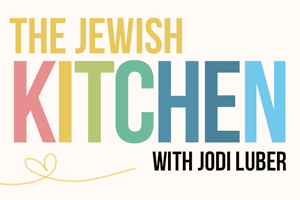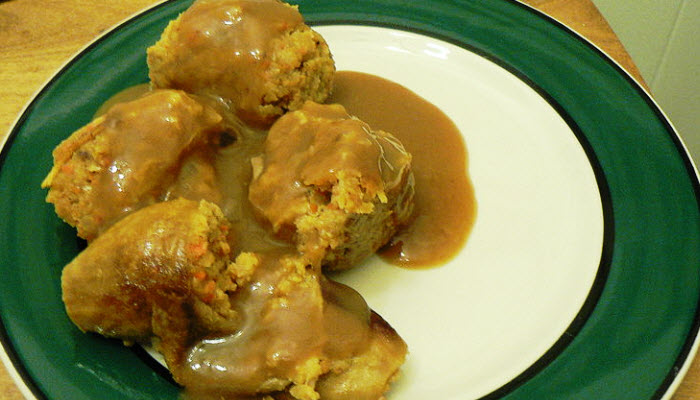Celebrating Modern Jewish Living Through Food, Tradition, and Family
Stuffed Derma (Kishka)
A classic, old-time side that’s as delicious and flavorful as it ever was.
The Backstory: I was raised on Jewish soul foods. This included Stuffed Derma (Kishka), chopped liver, chicken soup, and a whole bunch of foods that today’s younger generation snubs their noses at. They don’t know what they are missing. By today’s standards, these traditional foods are considered unhealthy because of their high salt and fat content. Feh. I say, eaten in moderation, they can and should be enjoyed. More of the Backstory after the recipe…

Kisha/Stuffed Derma
Ingredients
- 6 feet Kosher beef casings from your butcher
- 2 cups all purpose flour sifted
- 2/3+ cup chicken fat
- 1 medium onion, grated
- 2 1/2 tsp. Kosher salt, divided
- 1/2 tsp. black pepper
- 1 tsp. paprika
- 1/2 cup grated carrots
Instructions
-
In a large pot, heat water and 1 tsp. of salt. You will need enough to cover the casings. Cut the casings into 12 inch pieces. Sew up one end and turn inside out. Do all. Combine chicken fat, flour, 1 1/2 tsp. salt, pepper, carrots, onions, and paprika. Stuff each piece of casing with the filling. Sew up the ends.
-
Put into the boiling water. Lower the heat to low-medium. Cook for 10 minutes. Meanwhile, heat oven to 325 degrees. Grease a large sheet pan that will hold the casings. Remove from boiling water and drain. Put casing on sheet pan and bake for 2 hours. Remove from oven. To serve cut into 1-2 inch pieces.
-
Kishka can be frozen. When defrosted just heat them in the oven or the toaster. It can also be put into the microwave, on a plate, still frozen, and heat for about 1 minute, turn over and heat for another 30 seconds.
…The Backstory continues: When I was growing up, kishka was a staple at every wedding, Bar and Bat Mitzvah and holiday dinner I ever attended. In those years, (I’m talking about the late 1940s through the early 1990s) the menus for these simchas were pretty much overseen by the parents. Yes, couples had a say in most things, but not usually in the foods that were going to be served. And at a wedding? Our parents were paying the bills, our relatives were elderly and kosher, and so the menus were traditional and set by our parents, not by the bride and groom. It didn’t matter whose affair you went to, the menu was almost always identical. The only difference was the star of the show: prime ribs or chicken. And if it was prime rib it meant that the parents were going all out for the affair.
Years after I got married, I would serve kishka whenever I had the family over for a holiday dinner. I haven’t served a major holiday meal in years, but if I did, kishka would be on the table with all the rest of those artery-clogging foods. Moderation, my friends. And tradition.
[media-credit name=”Photos on this page by Stuart Spivak” link=”http://www.flickr.com/photos/stuart_spivack/154846226″ align=”aligncenter” width=”300″] [/media-credit]
[/media-credit]





 Subscribe to
Subscribe to